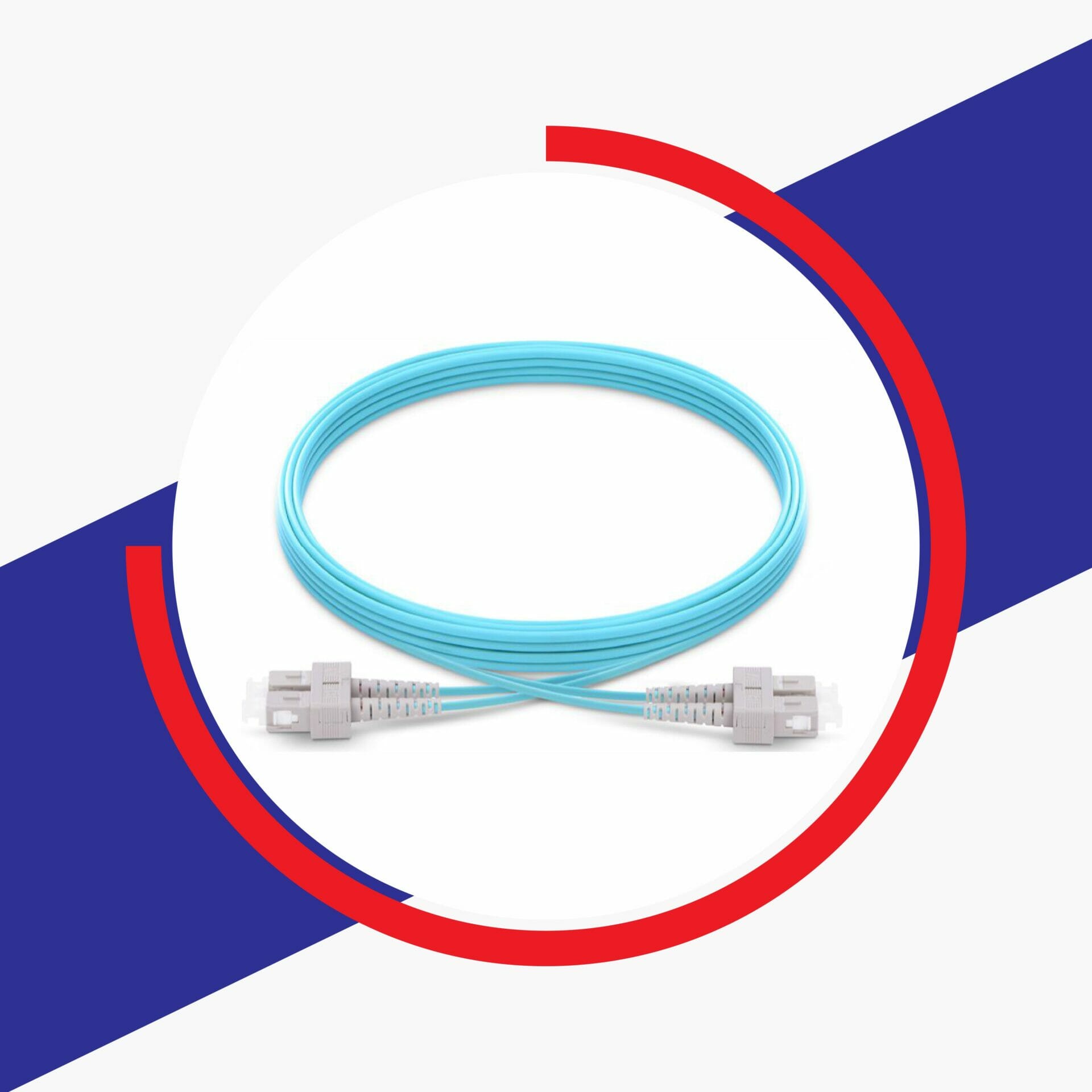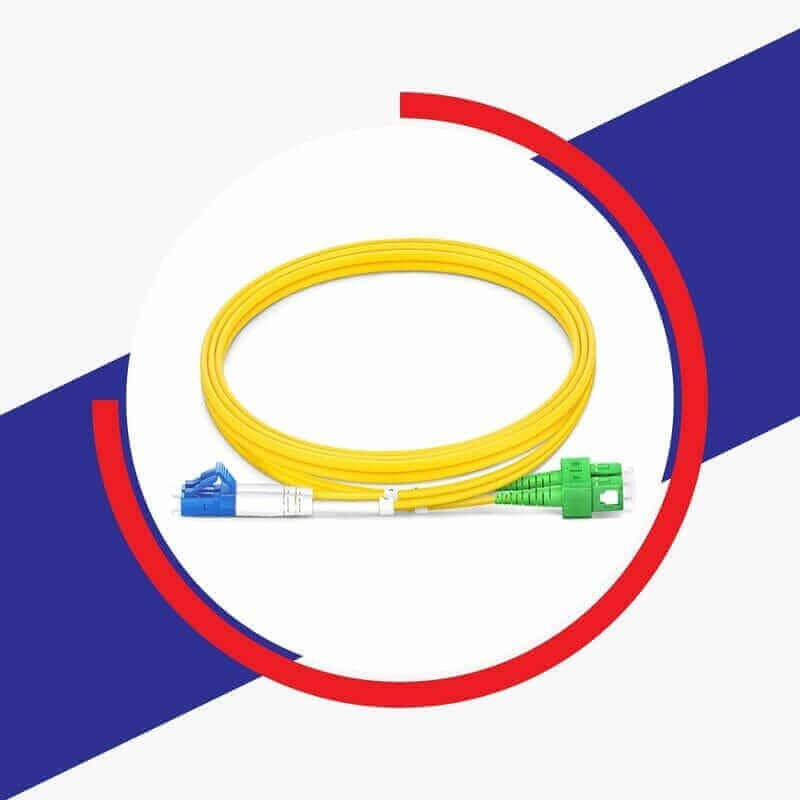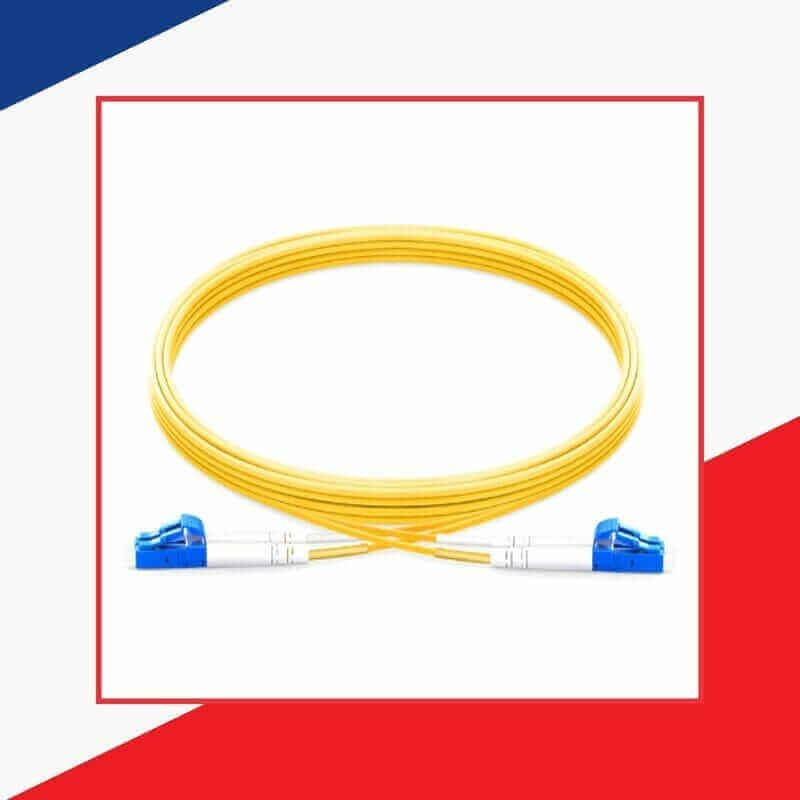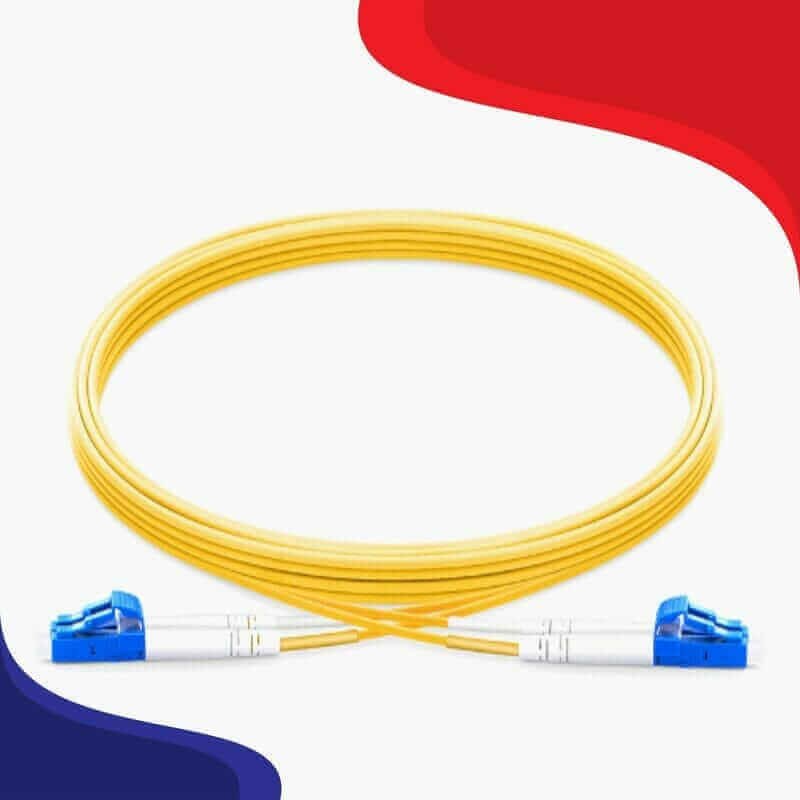OM2 Fiber Optic Patch Cords in the Fahad Cables Industry uae

Exploring OM2 Fiber Optic Patch Cords by Fahad Cables Industry
Introduction to OM2 Fiber Optic Patch Cords
OM2 fiber optic patch cords are specialized cables designed for efficient data transmission in various networking environments. These cords utilize multi-mode fiber optics, which allows them to transmit data over shorter distances with minimal signal loss. The OM2 designation specifically refers to a type of fiber optic cable that features a core diameter of 50 micrometers. This core size is crucial for allowing multiple light signals to travel simultaneously, thereby enabling high-bandwidth applications.
The significance of OM2 cables lies in their ability to support specific data rates and distances, making them particularly well-suited for applications within local area networks (LANs). To understand their role better, it is essential to compare OM2 fibers with other multimode options, such as OM1 and OM3. OM1 patch cords typically have a larger core size of 62.5 micrometers and offer lower bandwidth capabilities, making them less favorable for modern networking demands. In contrast, OM3 fibers expand on the technology, providing higher bandwidth capabilities suitable for data centers and demanding applications.om2 cable
OM2 fibers are notably optimized for a bandwidth of up to 500 MHz·km, which allows for effective data transmission rates of 1 Gigabit Ethernet up to 550 meters. This makes OM2 cables a reliable choice for businesses looking to expand their networking infrastructure without incurring excessive costs. Their usage spans various scenarios, including data centers, educational institutions, and commercial buildings, where the need for reliable and cost-effective data solutions is paramount.
As networking technology continues to evolve, understanding the specifications and applications of optical fiber cable becomes essential for selecting the right infrastructure components. The efficiency, performance, and cost-effectiveness of OM2 cables make them a fundamental element in contemporary networking setups.
Fahad Cables Industry: A Trusted Manufacturer
Fahad Cables Industry has established itself as a prominent manufacturer of optical fiber cable, demonstrating a robust commitment to quality and innovation since its inception. The company was founded with the vision of providing high-performance cabling solutions that meet the growing demands of the telecommunications sector. Over the years, Fahad Cables has expanded its product line and enhanced its technological capabilities, ensuring that it remains a leader in the fiber optics industry.
The company’s dedication to quality is evident in its meticulous manufacturing processes, where each fiber optic patch cord is produced under stringent quality control measures. This attention to detail ensures that the products not only meet but often exceed industry standards. Fahad Cables Industry employs a team of highly skilled professionals who bring extensive technical expertise to the production of optical fiber cable. Their knowledge guarantees that each product is engineered for optimal performance and durability, catering to the needs of clients across various sectors.
Fahad Cables Industry is also proud of its certifications and adherence to relevant industry standards. The company has obtained numerous quality certifications, which affirm its compliance with international benchmarks for safety and reliability. These certifications are a testament to Fahad Cables’ commitment to offering products that customers can trust. By continuously adapting to the latest technological advancements and industry requirements, Fahad Cables is well-positioned to deliver innovative solutions that enhance connectivity and communication. As a trusted manufacturer in the marketplace, Fahad Cables Industry exemplifies reliability, efficiency, and cutting-edge innovation in every OM2 fiber optic patch cord it produces.
Key Features of OM2 Fiber Optic Patch Cords
OM2 fiber optic patch cords, like those produced by Fahad Cables Industry, are designed to achieve optimal performance and reliability for various networking and telecommunications applications. One of the primary materials used in these patch cords is glass fiber, which offers superior performance compared to plastic alternatives. The use of glass ensures low attenuation and better signal quality, making it suitable for high-speed data transmission in environments where performance is critical.
Fahad Cables Industry provides a diverse range of lengths for their OM2 patch cords, accommodating different installation needs and configurations. From short cables for close connections to longer lengths suitable for extensive network layouts, the flexibility offered allows for customization based on specific project requirements. This variability in length is essential for ensuring that installation is convenient and that the cords can easily connect devices without excess clutter.





Another noteworthy aspect of Fahad’s OM2 fiber optic patch cords is the variety of connector types available. Common connector types include LC, SC, and ST, which are widely used in the industry. This assortment allows users to select the most appropriate connector based on their equipment compatibility and specific application needs. The precision engineering employed in the manufacturing process assures that these connectors maintain high performance with minimal insertion loss.
Unique aspects of Fahad’s OM2 fibers include rigorous quality control measures and adherence to industry standards. This commitment ensures that every patch cord meets performance specifications, enhancing their lifespan and operational efficiency. The combination of high-quality materials, versatile lengths, and various connector options positions Fahad Cables Industry as a reliable provider of OM2 fiber optic patch cords, making them a solid choice for both commercial and residential applications.
Applications of OM2 Fiber Optic Patch Cords
OM2 fiber optic patch cords serve a diverse range of applications due to their versatile nature and capability to handle multiple network protocols. Primarily, they are found in environments such as data centers, enterprise networks, and educational institutions, where high-speed data transmission is crucial. These cords are designed to support transmission speeds up to 1 Gbps over distances of 300 meters, making them an ideal choice for networks that require reliable performance without the need for extensive cabling solutions.
In data centers, where efficient data handling is paramount, OM2 patch cords facilitate the interconnected infrastructure necessary for servers and switches. Their high bandwidth capability enables the smooth transfer of large amounts of data, ensuring that applications run seamlessly. Moreover, their cost-effectiveness compared to more advanced fibers allows for an efficient setup without exceeding budget constraints, which is particularly important in large-scale data operations.
Enterprise networks also heavily rely on OM2 fiber optic patch cords. These organizations require a robust networking solution that can efficiently manage the connectivity of various devices across their premises. OM2 patch cords effectively support technologies like Gigabit Ethernet and Fibre Channel, making them suitable for a variety of applications, including VoIP services, video conferencing, and data backups.
Educational institutions, too, benefit greatly from OM2 fibers. Typically, they are deployed within campus networks to connect classrooms, laboratories, and administrative offices. The sufficient bandwidth allows for fast internet access, multimedia applications, and collaborative online tools, enhancing the overall learning experience for students and faculty alike.
In summary, OM2 fiber optic patch cords offer a reliable and efficient solution across various sectors, ensuring that organizations can maintain high-speed connections while accommodating increasing data demands. om2 patch cord
Installation and Usage Guidelines
When working with OM2 fiber optic patch cords, proper installation and usage are crucial for ensuring the performance and longevity of the system. These cords, designed for high-speed data transmission, require careful handling to avoid damage. First and foremost, always handle the cables by their connectors, avoiding any undue stress on the fibers themselves. This can prevent microbending, a condition that can compromise signal integrity.
When routing OM2 fibers, it is essential to avoid sharp bends and twists that could lead to potential fiber breakage. Aim to create gentle, sweeping curves in your patch cord layout to maintain optimal performance. Additionally, adhere to the recommended bend radius specified by the manufacturer; typically, it’s around four times the cord’s outer diameter. Using cable ties or Velcro straps can facilitate organized routing, but be mindful not to cinch them too tightly, as excessive pressure can damage the cables.
Another critical aspect of installation is ensuring that the environment around the fiber optic cords is conducive to their operation. Avoid exposing the cables to extreme temperatures, humidity, and physical hazards. For indoor installations, consider using raceways or conduits to protect the fiber from physical damage while ensuring easy access for maintenance.
Regular maintenance checks can also help in sustaining the performance of your OM2 patch cords. Periodically inspect for signs of wear or physical damage, such as fraying or connector degradation. Cleaning the connectors with fiber optic cleaning wipes is highly recommended to remove dust and oil, which can impair signal transmission.
In conclusion, following these installation and usage guidelines will significantly enhance the efficacy and lifespan of OM2 fiber optic patch cords. By avoiding common mistakes and adhering to best practices, users can fully capitalize on the benefits that these advanced fiber optic cables offer.
Troubleshooting Common Issues with Fiber Optic Cords
Fiber optic patch cords, specifically OM2 fiber optic cords, are integral to achieving reliable high-speed data transmission. However, users may encounter various issues that can affect performance. Understanding how to troubleshoot these common problems can help maintain optimal performance and ensure longevity.
One prevalent issue is signal loss, which can occur due to several factors. Inspecting connections at both ends of the OM2 fiber optic cord is essential, as loose connections can lead to significant attenuation. Additionally, contaminants such as dust or dirt may accumulate on the connectors, disrupting the light signal. Regularly cleaning the ends of the fiber optic patch cords with appropriate cleaning solutions and tools can mitigate this problem. In cases where the cord has been severely bent or kinked, it may require replacement as such physical stress can also lead to signal degradation.
Physical damage is another challenge often encountered by users of OM2 fiber optic cords. This includes damage to the cable itself, such as cuts, abrasions, or pinching. Conducting a thorough visual inspection of the fiber optic cords can help identify any visible issues. Should any damage be detected, it is advisable to replace the affected cord rather than attempting to repair it, as compromised cables may lead to further complications, including enhanced signal loss.
Compatibility issues may also arise, particularly when OM2 fiber cords are utilized with mismatched transceivers or network devices. To address this, users should ensure that the devices and cords are compatible, consulting the manufacturer’s specifications where necessary. In cases of uncertainty, engaging with technical support can provide clarification and guidance on the suitable configurations.
Addressing these potential problems promptly and effectively allows users to make the most of their OM2 fiber optic patch cords, ensuring seamless connectivity in their networks.
Comparative Analysis: OM2 vs. Other Fiber Optic Cords
Fiber optic technology has evolved significantly, offering various types of optic cords for diverse applications. Among these, OM2 fiber optic patch cords are known for their balance of performance and cost-effectiveness. However, understanding how OM2 compares to other types, such as OM1, OM3, and OM4, is crucial for selecting the appropriate patch cord for specific requirements.
Starting with OM1 fiber optic cords, these are typically limited to shorter distances, with a maximum effective range of about 275 meters. They operate at an 850 nm wavelength and provide lower bandwidth than OM2 cords, making them less suitable for higher-speed data transfers. This limitation often restricts OM1’s use to legacy networking environments or minimal data demands, whereas OM2 can handle moderate distances of up to 550 meters, thereby accommodating more current applications.
Contrasting this with OM3 fiber optic cords, which boast higher bandwidth (up to 2000 MHz·km), one can see the performance gap increases significantly. OM3 is often chosen for high-speed data centers and applications requiring greater throughput, as it effectively supports 10G Ethernet for extended distances. However, this performance comes at a higher cost. Likewise, OM4 cords enhance performance even further, facilitating 100G Ethernet over distances of up to 150 meters. Yet, the investment in OM4 may be unnecessary for businesses with modest data transfer needs.
Understanding Network Cables
Network cables are critical components in modern communication systems, facilitating the transmission of data across various devices. They enable connections within local area networks (LANs), wide area networks (WANs), and the internet, serving as the backbone for data exchange in both residential and commercial environments. The increasing demand for high-speed internet and connected devices has heightened the significance of network cables, making them indispensable in today’s digital age.
Fahad Cables Industry FZE specializes in manufacturing an array of network cables designed to meet diverse connectivity needs. Among the most popular types offered are the CAT5e, CAT6, and CAT6a cables. The CAT5e (Category 5 enhanced) cables are an improvement over the original CAT5, providing support for data speeds of up to 1 Gbps. They are commonly utilized for casual browsing, streaming, and online gaming due to their capability to handle moderate bandwidth requirements efficiently.
For environments that require higher performance, CAT6 cables are the preferred choice. CAT6 cables support data rates of up to 10 Gbps over short distances and are characterized by their enhanced shielding, which minimizes crosstalk and interference. This makes them suitable for applications such as video conferencing, VoIP, and large data transfers, where speed is critical.
Finally, the CAT6a (Augmented Category 6) cables take performance a step further, supporting data rates of up to 10 Gbps over longer distances and providing superior protection against external interference. They are ideal for more demanding applications, including data centers and enterprise networks that require reliable and high-speed connections with minimum latency.
In conclusion, the offerings from Fahad Cables Industry FZE provide essential solutions for various network applications, catering to the growing needs of consumers and businesses seeking reliable and efficient communication systems.
Diving Deep into Ethernet Cables
Ethernet cables are critical components in modern networking, serving as the backbone for both residential and commercial data transmission. These cables are primarily designed to connect devices such as computers, routers, switches, and other network hardware, enabling a seamless flow of information. At Fahad Cables Industry FZE, a leading manufacturer in the UAE, high-quality Ethernet cables are produced to meet various industry standards and specifications to ensure optimal performance and reliability.
There are several categories of Ethernet cables, each defined by specific performance metrics. The most common types include Cat5e, Cat6, Cat6a, Cat7, and Cat8 cables. The “Cat” designation stands for “category” and refers to the standards set by the Telecommunications Industry Association (TIA). For instance, Cat5e cables support speeds up to 1 Gbps with a maximum bandwidth of 100 MHz, making them suitable for standard home networks. In contrast, Cat6 and higher categories exhibit improved performance, supporting up to 10 Gbps speeds over shorter distances, which is ideal for enterprise-grade networks.
Each category of Ethernet cable comes with distinct functionalities that cater to specific networking needs. For example, while Cat5e is sufficient for most home users, businesses that require higher data transfer rates may rely on Cat6 or Cat6a cables. Additionally, Cat7 cables offer shielding that reduces interference, making them suitable for environments with significant electronic noise. Ethernet cables not only enhance the speed and reliability of network connections but also play a pivotal role in ensuring compliance with industry standards, such as ANSI/TIA and ISO/IEC.
As technology continues to evolve, so does the demand for high-performance Ethernet cables. Fahad Cables thrives in this competitive landscape by adhering to industry best practices, thereby ensuring that their products meet the rigorous performance demands of today’s interconnected world.
The Importance of Control Cables
Control cables are integral components in various industrial and automation applications, serving to operate and manage machinery, systems, and equipment effectively. These cables are designed to handle different types of electrical signals, ensuring reliable communication between control devices and machinery. At their core, control cables provide interface connections that facilitate the operation of motors, actuators, sensors, and various controls, making them crucial in maintaining efficient workflows in varying environments.
One of the primary characteristics of control cables is their construction, which typically incorporates multiple insulated conductors bundled together. This configuration allows them to transmit signals while minimizing electromagnetic interference, ensuring operational stability. Control cables are designed to withstand harsh conditions commonly found in manufacturing plants, power stations, and infrastructure installations, ensuring prolonged service life and reliability. The durability and flexibility of these cables are essential for their application in dynamic and frequently changing industrial environments.
Fahad Cables Industry FZE produces a diverse range of control cables tailored to different needs and industry standards. These include instrumentation cables, which are vital for precise measurement and control, and armored cables designed for extra protection against physical damage. Additional types include screened cables that reduce electromagnetic interference, making them particularly important in telecommunications sectors and sensitive manufacturing processes. Each type of control cable is engineered for specific applications, ensuring that they meet the stringent demands of various sectors.
Applications of control cables span a wide array of industries, including manufacturing, telecommunications, and transportation. In manufacturing, control cables are used in automation systems to facilitate operations such as conveyor movements and robotic assembly. In the telecommunications industry, these cables support data transmission and network connectivity, making them essential for modern communication systems. Their versatility and reliability underscore their importance as a foundation in today’s interconnected industrial landscape.
Manufacturing Process of Cables
Fahad Cables Industry FZE employs a meticulous manufacturing process that begins with the careful sourcing of high-quality raw materials. The company prioritizes partnerships with reputable suppliers to ensure the copper, insulation, and other components meet stringent industry standards. The selection process emphasizes not only the quality but also the sustainability of materials, aligning with global best practices in responsible sourcing.
Once the materials are procured, the next phase involves advanced manufacturing techniques that enhance production efficiency while maintaining product integrity. Fahad Cables utilizes state-of-the-art machinery and technology to facilitate the production of network and control cables. This includes automated extrusion processes that ensure a uniform application of insulation on the copper wires, critical for optimal performance and safety. Furthermore, the organization has integrated modern techniques such as continuous casting and drawing, which contribute to improved conductor strength and enhanced electrical characteristics.
Quality control is a cornerstone of Fahad Cables’ manufacturing process. Each step of production undergoes rigorous oversight to identify and rectify any discrepancies early on. This includes testing the electrical properties of the finished cables, as well as visual inspections to ensure uniformity and adherence to specifications. The company has established a comprehensive quality assurance framework, encompassing everything from initial material checks to final product evaluations, which guarantees the reliability and durability of their cables.
Additionally, the manufacturing facility is regularly updated to accommodate the latest technological advancements and industry trends. This proactive approach enables Fahad Cables to remain competitive in the UAE market. The ongoing investment in technology and skilled personnel further solidifies their reputation as a leading manufacturer of network and control cables. Collectively, these elements underscore Fahad Cables Industry FZE’s commitment to delivering high-performance products to its customers.
When considering the application scenarios, OM2 cords serve well in networks where moderate speed and distances are essential without incurring the higher costs associated with higher-grade fibers. They provide a suitable balance for environments like educational institutions or small enterprises that require reliable connectivity without the significant investment required for OM3 or OM4.
In analyzing the performance, cost, and application scenarios of OM2 fiber optic patch cords against their counterparts, it’s evident that they have a niche role in the fiber optic landscape, making them valuable for specific use cases.
Customer Testimonials and Case Studies
Fahad Cables Industry’s OM2 fiber optic patch cords have gained a significant reputation in various industries due to their reliability and performance. Customers from different sectors share their positive experiences, highlighting the effectiveness of these patch cords in enhancing their connectivity solutions.
One testimonial comes from an IT solutions provider that incorporated the OM2 fiber optic patch cords into their data centers. The company reported a remarkable improvement in data transmission speeds, with their clients receiving consistent service with minimal latency. They noted, “The OM2 patch cords have transformed our network performance and reliability. We experienced a noticeable decrease in downtime since we upgraded, allowing us to better serve our clients.”
Another case study involved a telecommunications company that needed to upgrade their existing infrastructure to support higher bandwidth requirements. They chose Fahad’s OM2 fiber optic patch cords for their project due to the positive feedback from previous users. Post-installation, the company recorded a 40% increase in network capacity, directly attributing this success to the use of these high-quality patch cords. Their team emphasized, “The technical specifications and performance exceeded our expectations. It is clear that Fahad’s products deliver on their promises.”
Moreover, a university implementing a campus-wide networking system also turned to Fahad Cables for their OM2 fiber optic patch cords. The educational institution sought a solution that could handle heavy data loads from connected classrooms and labs. Their testimonial highlights a seamless integration with existing systems coupled with improved system efficiency. “The performance metrics we gathered after installation showed significant improvements across the board,” the IT director stated. “Fahad’s patch cords have certainly met our standards for quality and performance.”
These testimonials and case studies collectively emphasize the customer satisfaction and reliability of Fahad Cables Industry’s OM2 fiber optic patch cords, showcasing their effectiveness across various real-world applications.
Conclusion and Future Prospects of OM2 Technology
As technology continues to advance, the significance of OM2 fiber optic patch cords remains ever relevant. These cords are integral in enhancing data transfer rates and supporting increasingly complex networking environments. With their ability to support Ethernet speeds of up to 1 Gbps over considerable distances, OM2 cables facilitate efficient communication between devices, making them a cornerstone in both enterprise and home networking setups.
Looking ahead, the future of OM2 technology appears promising. Although newer standards such as OM3 and OM4 fiber optic cables have emerged, which support higher bandwidths and are optimized for longer distances, there is an enduring demand for OM2 patch cords. Many organizations continue to utilize OM2 for cost-effectiveness in environments where ultra-high-speed connections are not a primary requirement. This trend showcases how OM2 technology can coexist alongside more advanced fiber optic solutions in diversified network architectures.
Manufacturers like Fahad Cables Industry are likely to respond to evolving networking needs by investing in innovation and research. The ongoing development of fiber optic materials and manufacturing techniques may lead to more enhanced versions of OM2 cables, driving efficiency and performance further. Additionally, as the demand for sustainable and environmentally friendly solutions grows, there may be increased focus on producing OM2 patch cords with recycled materials or reduced carbon footprints.
In summary, OM2 fiber optic patch cords play a crucial role in current and future networking landscapes. Their resilience and adaptability ensure they remain a valued solution for many industries. Continuous innovation by companies like Fahad Cables Industry will likely shape the trajectory of OM2 technology, meeting the demands of a rapidly evolving digital ecosystem.
